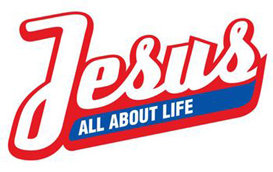 What on earth do vampires, blood banks and advertising have in common? At first glance, they seem completely unrelated and nonsensical. But when you consider them within the context of the Australian TV calendar, you soon realise that these 3 elements have much more in common. In fact, they are so tightly intertwined, that the Winter of 2010 presents the Australian advertising industry with an extremely unique opportunity.
What on earth do vampires, blood banks and advertising have in common? At first glance, they seem completely unrelated and nonsensical. But when you consider them within the context of the Australian TV calendar, you soon realise that these 3 elements have much more in common. In fact, they are so tightly intertwined, that the Winter of 2010 presents the Australian advertising industry with an extremely unique opportunity.
Let me explain...my rather distorted/alternate market observations:
Firstly, True Blood Season 3 will debut in Australia in Winter, on August 19.
Secondly, Winter seasonally marks the lowest levels of blood donations to the Australian Red Cross Blood Service (people fall sick during Winter and donation rates drop dramatically). It also marks the period when donor campaigns are ramped up to obtain more blood.
The extremely unique opportunity here, is to capitalise on the business needs of both organisations and go to the Australian market with a co-branded campaign. Both organisations will benefit from significant national exposure in the lead up to True Blood's third season debut. This will also continue to persist during the season's broadcast. Additionally, the Australian Red Cross Blood Service will potentially benefit from increased quantities of new donors or existing donors donating blood during the Winter season.
Why does this idea work?
It's vastly different.
Globally, I think this may be a first, where an international premium cable-television network teams up with a local humanitarian, non-government organisation to support a blood drive campaign. The closest the Australian Red Cross Blood Service has come to partnering with a media-related organisation is the 2010 Open Air Cinemas in Sydney, Melbourne and Brisbane. According to @redcrossbloodau, their "presence at the event was focused on raising awareness of the need for blood, rather than donations".
This campaign will be like a breath of fresh air, for the general public, and it will instantly grab their attention.
It's bold & edgy.
The Australian Red Cross Blood Service will be taking a huge leap away from it's current marketing strategy and will be definitely pushing the packet. What is exciting about this is that it's bold and edgy: it shows the versatility of the Australian Red Cross Blood Service to adopt an alternate market position, one within international, mainstream television media.
And it's not THAT risky.
Vampirism is nothing new for the Australian Red Cross Blood Service. For example, it currently works in conjunction with the Australian Medical Students’ Association (AMSA) on an annual blood drive competition known as the Vampire Cup. It also coordinates the Vampire Shield program at Queanbeyan High School during June and July. As such, affiliating the Australian Red Cross Blood Service brand with the True Blood vampire theme won't be an issue.
What will be issues though, are the other connotations associated with the True Blood series - the vulgarity, graphic violence, racism and nudity. I however, think this can be overcome - it depends on the angle of the True Blood series, which is marketed to the public. Furthermore, most of the public will understand that the motive for the co-branding is for a good cause. In this case, I believe the greater good will significantly outweigh any negative connotations.
What do you think? Putting aside the short time frame to execute an advertising campaign like this, do you think a co-branded approach would even work?
Drop a comment below & hit me back with some ideas :)

